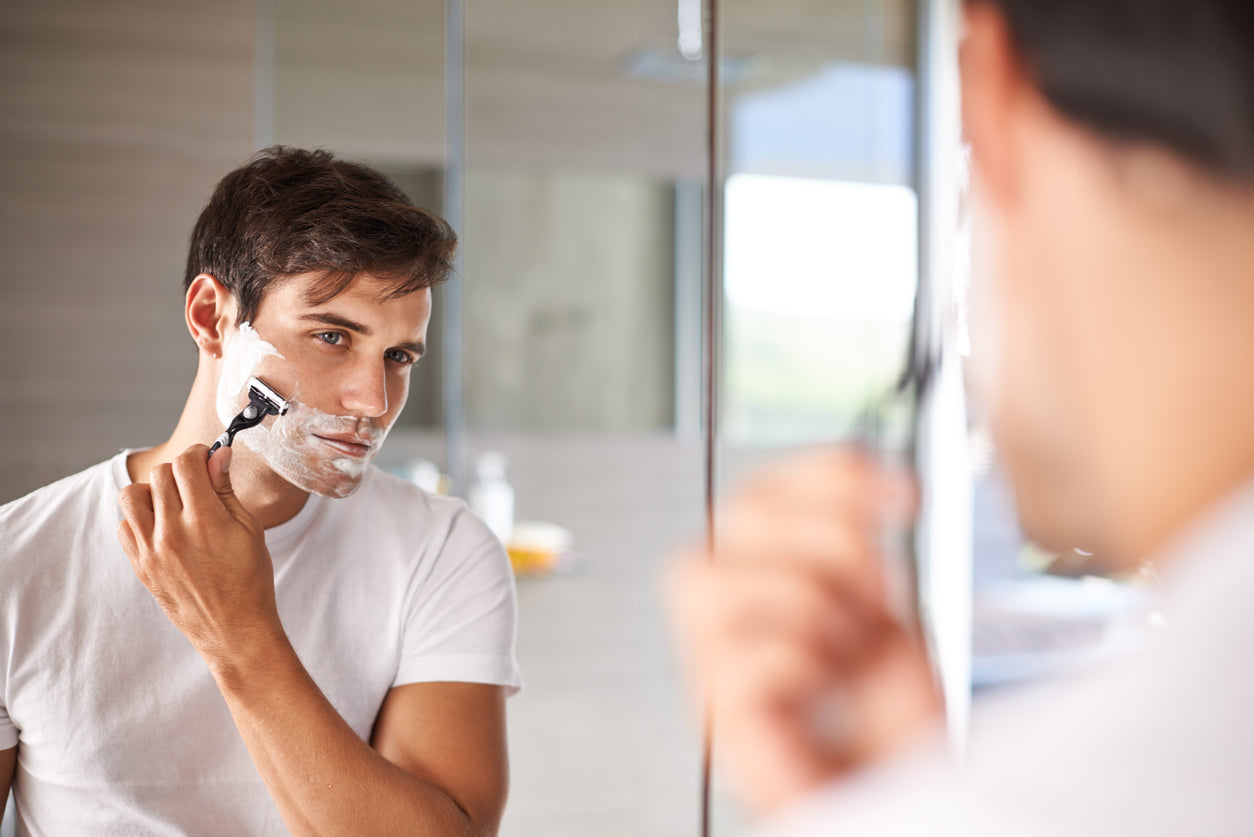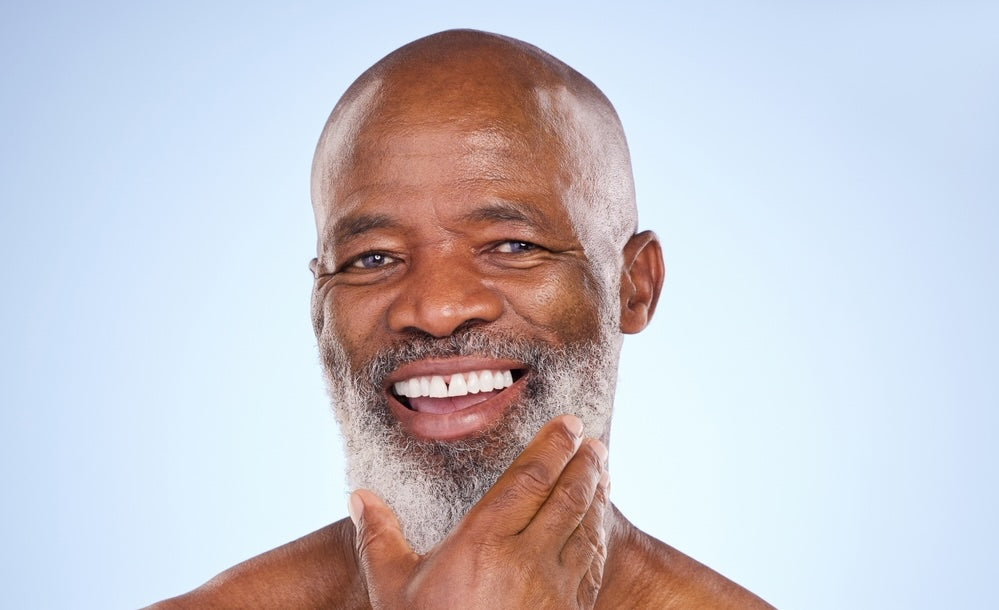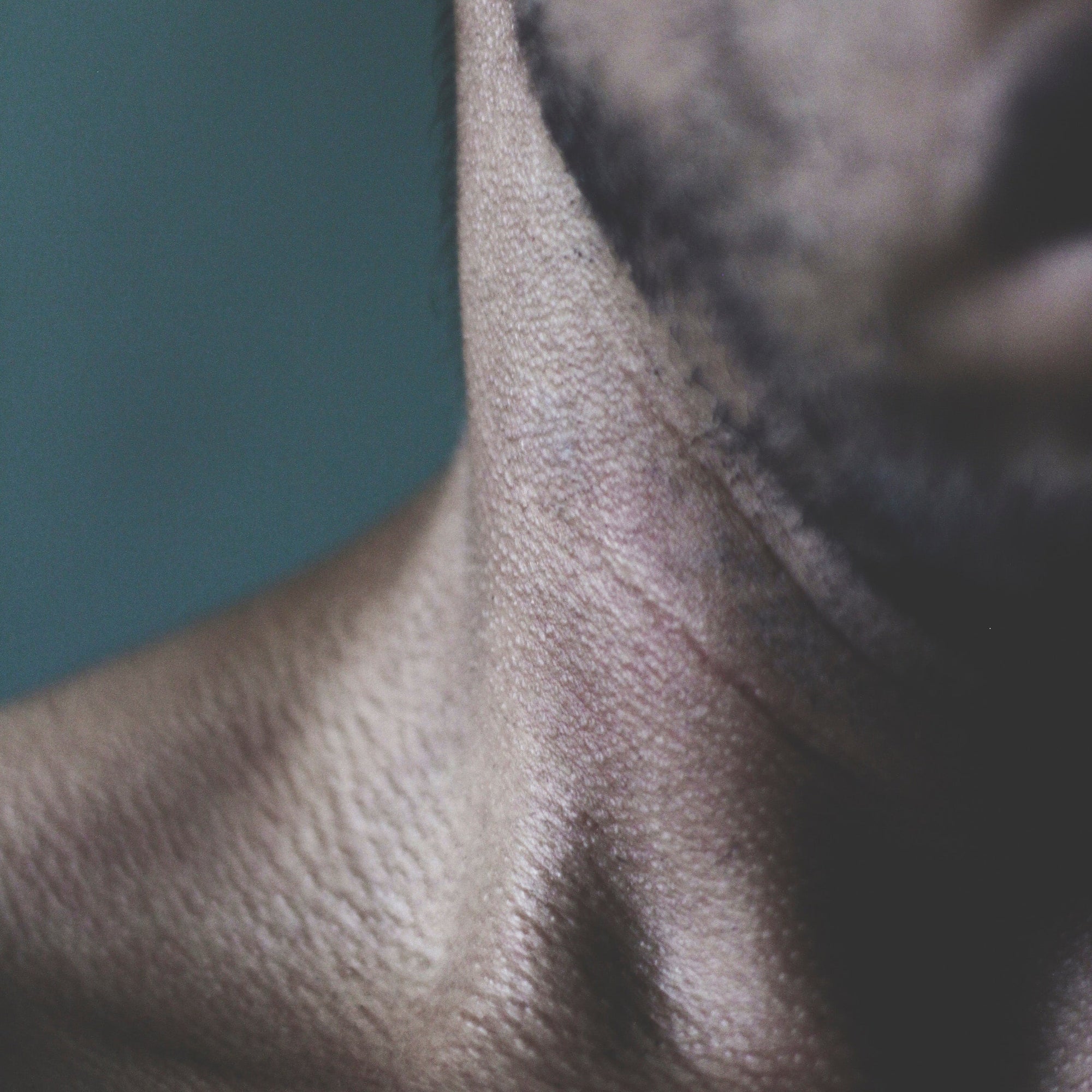For a man, learning how to shave is a real skill, and it's one that's worth perfecting!
And while dragging a blade against your face is never going to be a fun experience, good shaving prep, the best shaving cream and correct razor technique go a long way to ensuring you have a comfortable, pain-free shave.
So be kind to your skin and follow these 9 simple steps to give your face the shave you deserve!

Irritation, redness and the painful sting from a cut (that just will not stop bleeding!) are not the best ways to start your day!
And as if the pain wasn’t enough, the stress to your skin of shaving can also lead to signs of premature aging.
But there’s a lot you can do to avoid this and ensure a smooth, pain-free shave before you even pick up your razor.
- Preparing your skin well beforehand will halt painful ingrown hairs, razor bumps and sore skin infections. It will make your skin smoother and your beard softer and easier to cut. And as a bonus, it gives you a great complexion too!
- Adopting the correct shaving technique and using the razor in a way that won’t irritate your skin, means you can avoid surface redness and razor burn.
If you've got a few weeks growth you might want to check this article out first: "How to Successfully Shave off your Beard".
ACTION PLAN: 9 tips for a pain-free shave
The following grooming tips are easy to put into practice and will make sure that your post-shave complexion is smooth, calm and even-toned.
#1: Prep your skin
A comfortable shave starts with good prep.
The first thing to do is splash your face with warm (not hot!) water. This will open up your pores and soften your facial hair, making for a smoother, more comfortable shave with less irritation. It also allows your hair follicles to relax, letting hair protrude out from the skin, and so making your beard easier to cut.
A great time to shave is when you’re taking a shower – or just afterwards. Your skin will stay warm and relaxed throughout the shaving process.
It's the reason that a barber will apply a hot towel to your face before a professional shave.
You can use the same principal yourself at home. Just use a warm wrung out washcloth to gently heat your skin.
The main thing to remember is that we are trying to keep your skin warm, moist and relaxed.
#2: Clean and gently exfoliate before you shave
The secret to getting a smooth, painless shave is to have smooth skin to start with. So the next step is to get your skin really clean and free from gunk.
Facial oil and dead skin cells create friction which stops the razor from getting close to your skin and gliding smoothly over it. Cleaning away the oil and exfoliating away the dead skin cells means less friction for your blade, and the closer and less painful your shave will be.
Now we’ve said this before, but when it comes to cleaning and exfoliating your skin (especially just before you shave), the product you use makes all the difference.
You need a good quality, non-drying face wash that includes a chemical exfoliator. (Definitely do not use a bar of soap - we explain why here: "Face Wash vs Soap").
Of course, we hope that you choose our exfoliating Daily Face Wash.
It contains moisturizing Glycerin, and soothing ingredients like Aloe Vera and Allantoin. So it effectively cleans away excess oil and debris but won't make your face feel dry.
Exfoliating Face Wash for Glowing Skin
Our Daily Face Wash also includes Lactic Acid, a mild exfoliating Alpha Hydroxy Acid (AHA).
It gently exfoliates dead skin cells, but it won’t irritate or dry out your skin.
Obviously, you never want to dry out your skin, but this is even more crucial when you’re about to shave. Shaving over rough, dry skin is guaranteed to lead to soreness, irritation and razor rash!
Why is exfoliation so important to your shave?
Exfoliation will dissolve away the dead skin cells that can clog, blunt and reduce the life of your razor blades.
But it's important to use an AHA, which is a natural chemical exfoliant because it works without damaging or inflaming your skin like a gritty, physical scrub would do. Again, shaving over already inflamed skin is the last thing you need!
Exfoliation will also prevent ingrown hairs that can turn into angry red bumps and become infected when you shave over them.
What causes ingrown hairs?
Ingrown hairs occur when a hair that should grow out of the skin from the hair follicle, instead curls back or grows sideways into the skin. It’s the build-up of dead skin cells that traps the hair and stops it growing correctly, so clearing them away is important.
The result of this prep will not only be a clean and smooth surface for you to start shaving, but it also brightens your complexion, letting your face’s natural glow shine through, even on non-shaving days.
#3: Use the right products
There are literally hundreds of shaving creams and gels to choose from, it can be overwhelming!
Shave cream vs shave gel
You want to find a product that’s designed to effectively protect your skin during your shave, and for that you need a protective shaving cream rather than a shaving foam.
A foaming shave gel is just made up of tiny pockets of air that disappear as soon as the razor touches your face. It feels cushion-y and reassuring, but it's not!
Why is shaving cream the best?
A nourishing shaving cream will create a rich, lubricated barrier between your skin and the razor. This will protect your skin as well as providing lubrication for the shaving process itself, softening your beard and helping maintain your skin’s hydration level too.
This is particularly important if you already have sensitive skin and for delicate areas like your neck.
Best Shave Cream for the Smoothest Shave
Our Protective Shave Cream is based on moisturizing Glycerin and enriched with Shea Butter so it will nourish and protect your skin throughout your shave.
It includes Apricot Stone Oil to soften your beard for easier shaving too.
We’ve also added Aloe Vera to soothe your skin and purifying Tea Tree Oil to help reduce any redness and irritation.
If your skin is especially sensitive, or your beard is particularly tough, a good pre-shave oil can also help. Like the Apricot Stone Oil, it will soften the hairs making for an easier, smoother cut and as a result, less irritation.
And when it comes time for the shaving itself, we recommend using a good old-fashioned shaving brush with your shave cream. It may seem old school, but for a super-smooth finish, the shaving brush (much like the pre-shave oil) actually helps lift the hairs up and away from your skin for an easier, closer shave.
#4: Don’t lather
A big, frothy ‘beard’ of lather can feel reassuring. It’s as though your face is protected by a super soft cushion of foam …. but don’t be fooled! This frothy ‘cushion’ is made up of tiny pockets of air which will disappear as soon as a blade touches them, leaving your skin unprotected.
In addition, the propellants used to get the product out of the can, and the chemicals used to create the lather, are very drying and irritating for your skin.
Instead, always use a non-lathering nourishing shaving cream (like our Protective Shave Cream) on your skin to get a smooth close shave while protecting your skin from irritation.
How do I apply shave cream?
Apply a small amount of the cream to your face with your fingers, or with the shave brush using a circular motion. The shave brush will lift the hairs and coat them more evenly with the shaving cream.
Let the Protective Shave Cream sit for two to three minutes, particularly if you have thicker facial hair. This helps the shaving cream really penetrate the hairs and soften them prior to cutting.
If you've been used to a foaming shave cream or shaving soap all of this will feel very strange at first but trust us, it’s the best way to protect your skin and prevent irritation.
Once you experience the results, you won’t go back!

#5: Map the direction of your hair growth
Just take a minute to map out the direction of hair growth, or grain, on your face.
Grain can be very, very complicated! There are multiple grains on your face, especially on your neck and jaw line where the hairs tend to grow in all different directions.
These can easily be mapped out by lightly running your fingers down your beard. If it feels smooth with little resistance against your fingers, then you’re going with the grain, if there’s resistance and it feels prickly then you’re going against the grain.
Once you’ve mapped out the grains on your face you can (finally) pick up the razor!

#6: Up your razor game
Practising a good shaving technique means that you can use the razor in a way that won’t irritate your skin. And you can avoid surface redness and razor burn.
How to shave?
Start by getting expert advice from your barber as to the best way to shave your particular face and skin type. A lot can depend on the thickness and growth pattern of your beard, and he will be able to instruct you as to the best way to shave for you.
The thing to remember is that it’s important to always shave WITH the grain.
Why shave with the grain?
It’s tempting, we know, to shave against the direction of hair growth for that seemingly closer shave, but it’s not worth the irritation. It will only aggravate your skin and can distort the hair follicles causing ingrown hairs to form.
What is the best way to shave?
A key tip is to apply minimal pressure. Hold your razor at the very end of the handle, gripping it lightly. Then let the razor do the work. The only pressure applied should come from the weight of the razor.
And use short, confident shaving strokes, whilst avoiding going over the same spot multiple times.
Repeatedly shaving across the same area of your face will result in severe irritation.
It’s the hardest shaving skill to master but cutting every hair without having to repeat a spot is how you avoid cuts, scrapes, and razor rash.
And making quick short strokes on your beard allows for the change in grain direction that happens all over your face.
Whatever type of razor you prefer, remember to change the blades often.
The dull, damaged edge of an over-used razor blade will pull against your skin, causing painful redness and razor burn.
Swapping out your blades every 3-4 shaves will ensure an effortless, pain-free cut.
#7: Moisturize post-shave
It can take up to 48 hours for your freshly-shaven face to fully heal, and keeping your skin well hydrated during that time is the best defence against irritation.
While most moisturizers will immediately hydrate your skin, you can up the ante by seeking out a men's facial moisturizer that will soothe, relieve and repair your post-shave skin at the same time. There are many healing ingredients to choose from but Aloe Vera, Allantoin and D-Panthenol are all excellent examples.
In fact, to nourish and repair your skin after shaving, our Hydrating Daily Moisturizer is hard to beat!
It’s been designed to lock in moisture and clinically proven to dramatically increase skin hydration levels for over 8 hours after application.
Leaving you with a smooth, even-toned complexion after your shave.
Best Post-Shave Hydrating Moisturizer
Our Hydrating Daily Moisturizer contains Hyaluronic Acid (the gold standard of moisturizing agents) to provide long-term hydration and keep your skin smooth and supple, at the same time as reducing fine lines and wrinkles, restoring elasticity and improving skin texture.
To soothe and heal your face we included Aloe Vera and Allantoin, alongside Vitamin E and D-Panthenol to restore the natural barrier function of your skin.
Plus it’s super-light, absorbs instantly (and painlessly) and won’t leave a greasy film on your face.
#8: Avoid traditional aftershaves
You may have been put off using anything on your baby-sensitive, post-shave skin because in the past it has led to a nasty stinging sensation.
The cause of this post-shave irritation is actually the drying alcohol which is included in traditional aftershaves (and many mainstream moisturisers too).
And because the alcohol evaporates on contact with the skin, it’s also extremely drying. Avoid it at all costs!
And finally…
#9: Take it easy
Be good to your skin and let it rest. Try to limit shaving to every other day so that your face has a chance to recover.
And always keep your skin well hydrated.
FAQ's
How can I shave when I have acne?
Shaving with acne can be very painful. It must be done carefully, otherwise it can cause irritation, spread bacteria and worsen the condition!
We've got more here on clearing up jawline acne - along with the best way to shave an affected area: "How to Clear Up Acne on Your Jawline".
The Takeaway
Follow this advice each time that you shave and the effect will be immediate.
No more cuts, irritation and ingrown hairs... just a smooth, close, pain-free shave and a calm, even-toned complexion.
- Prep your skin
- Clean and gently exfoliate before you shave
- Use the right products
- Don't lather
- Map the direction of hair growth
- Up your razor game
- Moisturize post-shave
- Avoid traditional after-shaves
- Take it easy
Try a little tenderness.
SHOP THE ROUTINE.
All you need to stay looking handsome.
PRESTIGE SKINCARE FOR MEN. MADE IN FRANCE.



